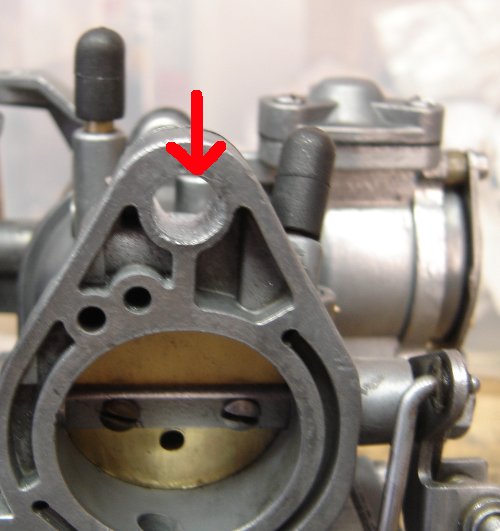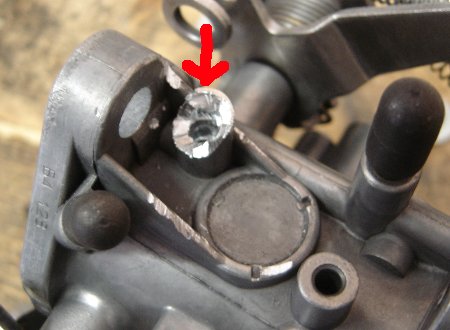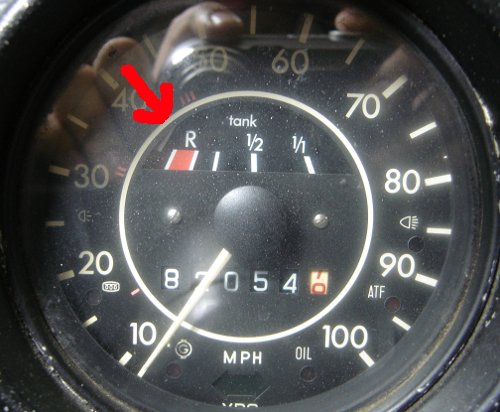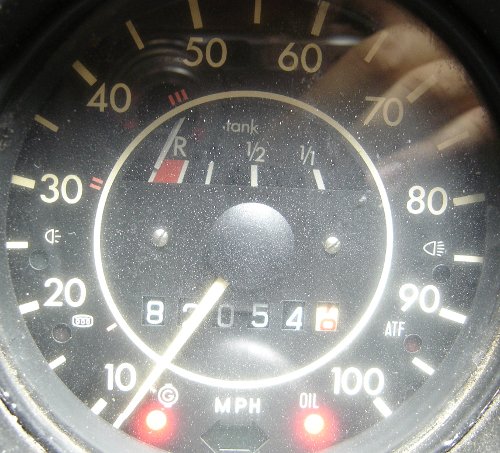I've said it before, and I'll say it again--a vintage car is never, NEVER done. You may think it's done, but then you'll find something else that needs to be fixed or something else that needs to be done or something else that breaks.
Sunday night, I had the new carburetor assembled. Which was a temporary situation, as it turned out. Later in the week, I went to re-assemble it, the rear stud just turned out of the carb body. What's more, it turns out that the hole was pretty much stripped out. So I ended up having to enlarge the strip out the hole completely
and remove enough material for this other (unused) vacuum flange 
that I could get the stud and a nut in there.
Here's a nut and the stud, assembled as it if was a bolt. Note that this is the first time I've ever used red Lock-tight. 
Which, finally, installed in a reasonable manner. The improvised bolt/stud is highlighted.

Now on to finishing the fuel system. One thing you rarely get to do is see the level of the gas gauge when there is NO fuel in the tank. Here's mine. First, the resting point of the gauge with the ignition off:
You can just see the needle over to the left.
And here's the gauge with the ignition having been on for a minute or two. Right on the line!
Keep in mind, there is only air in the tank at this point, so this is the very very lowest that the gauge can ever read when it's active.
Oh, and the car starts now, taking fuel from its own tank. Getting the tank venting correct is the subject of a (hopefully soon) future blog post.